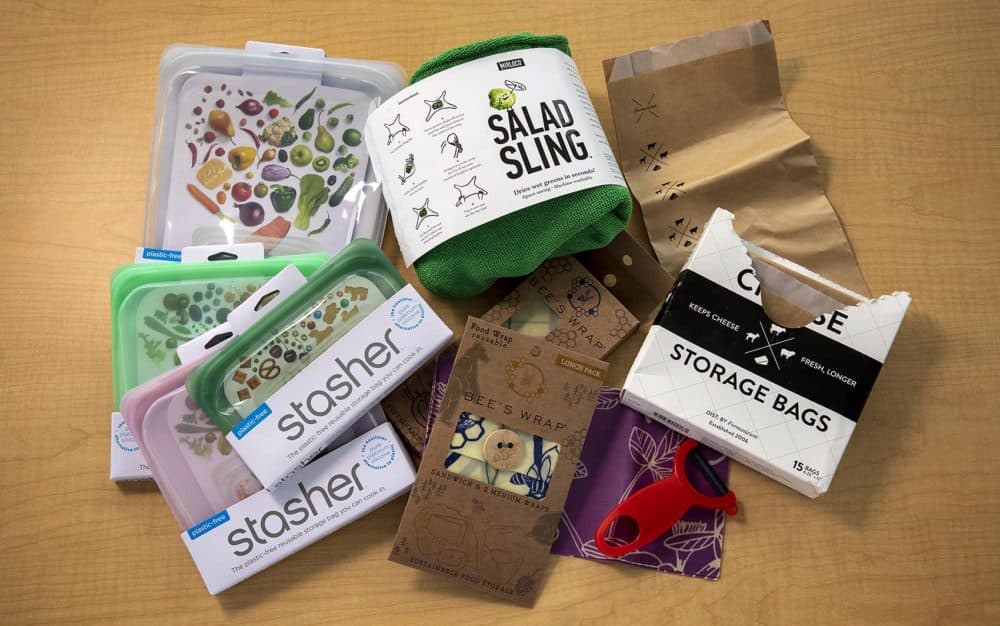Advertisement
Eco-Friendly, Affordable Gadgets For A Greener Kitchen
Resume
I am at the point in my life where I’m more interested in simplifying things rather than acquiring more stuff. And if you snooped around my kitchen, you would agree that the last thing I need is more kitchen gadgets. (Do you hear my husband clapping loudly at this statement?) But what I do need is a new consciousness about the environment and finding different ways to have a greener kitchen.
My goal for 2020 is to avoid plastics as much as possible and reduce the general waste in my kitchen and my home. And while that might not sound ambitious, the truth is that doing without plastic wrap isn't that easy for someone who is in their kitchen every day of the week testing recipes. It’s hard to wrap things tightly and efficiently without using plastic. Or is it?
I did some research, talked to cooks and friends, and came up with this collection of environmentally-friendly kitchen gadgets that will help all of us become a bit greener this new year.
Stasher
Average price: $49.00 for a set of four various shaped containers
Forget about Ziploc bags and other types of plastic wrap and bags. My daughter Emma — horrified at the amount of plastic she found in my kitchen last year — bought me my first collection of Stasher, and I was hooked.
Stasher is an award-winning, eco-friendly, environmentally-safe alternative to plastic and plastic bags. Made from pure-platinum silicone, the bags are super simple to use: They can go into the freezer or microwave and can be cleaned in the dishwasher. They have an airtight seal that locks in food, keeping it fresher.
The CEO and founder of Stasher, Kat Nouri, was determined to prevent millions of single-use plastics from piling up in landfills and polluting the ocean. Stasher comes in various sizes, shapes and colors. You’re going to need a whole bunch. And while $50 may sound expensive for wrapping up food, think of it this way: How much do you spend in a year buying plastic wrap and bags? This stuff lasts and can be used over and over again.
Bee’s Wrap
Average price: $19 to $42 for a variety pack of small, two medium, two large and one bread-sized
OK, take a look at the rolls of plastic wrap and tin foil and wax paper you have in that drawer. Now think about getting rid of all of it. Bee’s Wrap, a natural alternative to plastic wrap, can be used for everything from wrapping up a lemon, raw meat, snacks, leftovers or half an onion.
The company was founded in 2012 by Vermonter Sarah Kaeck, a mother of three, gardener, farmer and seamstress. In a quest to eliminate plastics from her kitchen, she began infusing organic cotton with beeswax, jojoba oil and tree resin to create a reusable, washable and compostable alternative to plastic wrap.
Bee’s Wrap stretches to fit around leftovers, and cover up that bowl of cake batter. It can be washed and reused time and time again.
Salad Sling
Average price: $20
I eat a lot of salad. And like most people, I have big plastic salad spinner that works just fine, but takes up a whole lot of space. When I first heard about Salad Sling, a thick terry cloth piece of fabric that dries your greens quickly, I was intrigued.
The Salad Sling is a three-layer design that features an ultra-absorbent microfiber and waterproof barrier that pulls moisture from the surface of greens. You open up the sling, place your wet greens in the middle, grab the handles and swing the Sling in a circle (a good arm work out!) for just a few seconds. Using centrifugal force, you sling your greens dry in seconds.
You can use the Salad Sling to dry lettuce, herbs, kale, Swiss chard or any greens. It's machine-washable, and costs less than most salad spinners. And if you don't like it, simply return it within 30 days for a full refund.
Purifyou
Average price: $30 for a set of six
You go to the farmer’s market or the grocery store and you want to buy a bunch of oranges, lemons or apples. You grab one of those little plastic bags and fill the bag, come home and then, what? Chances are you throw out the plastic bag.
Wait. You need an organic cotton reusable mesh produce bag to take to the store, just the same way you now go shopping with your own recyclable bags. These organic, unbleached cotton reusable bags work well for onions, apples, laundry, or storage. Each see-through mesh bag is lightweight and will hold up to 11 pounds. And the bags are machine washable.
SodaStream
Average price: $70 to $120
In our house, we drink a whole lot of seltzer or soda water. Every week we empty our recycle bin and notice all those glass and plastic bottles. So we decided to try a SodaStream and now make our own seltzer to order with the ease of filling a bottle with water and pushing a button — and it all feels so much better.
According to the company, one SodaStream can replace up to 2,000 plastic bottles.
Wide-Mouthed Vegetable Peeler
Average price: $10 for a set of three
If you’re thinking a vegetable peeler seems like it might not fit into a segment on having a greener kitchen, let me explain: peeling vegetables becomes so easy with a wide-mouthed peeler and results in less waste. You can use it to shave thin slices off a wedge of parmesan cheese, or make carrot spirals, peel ginger, and the amount of vegetables you waste is minimized.
Bonus: Keep all the vegetable peelings — the onion skins, carrot and parsnips shavings, and leek peelings — in a bag in your freezer and then use them all to make recycled vegetable stock.
Cheese Storage Bags
Average price: $9
Save your cheese! Cheese was not put on this earth to be wrapped in plastic. Made in France, these cheese storage bags and cheese paper will keep your cheese fresh longer without suffocating it in plastic. It's made of a material that allows cheese to breathe while maintaining optimal humidity.
They look almost like a wax paper but these bags allow oxygen to flow, letting your cheese breathe and prevents moisture from escaping, creating a “cave-like environment.” Your cheese will stay fresher for way longer than wrapping it in plastic.
This segment aired on December 17, 2019.
